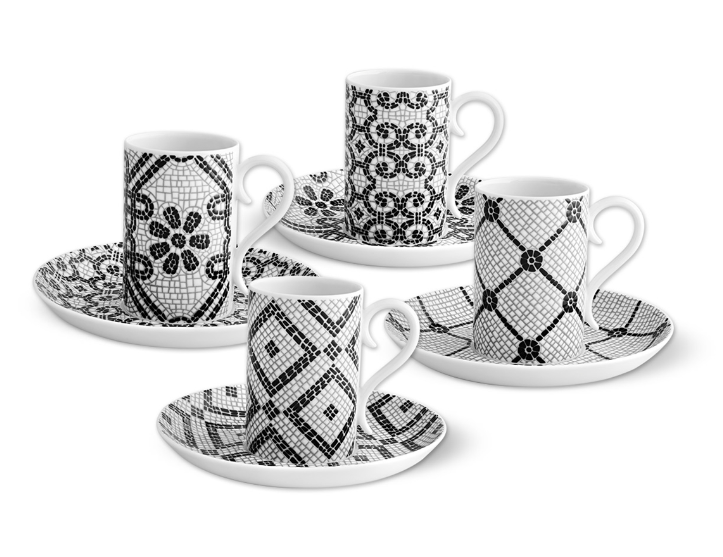When I left Portugal as a child, one of things that surprised me was how boring sidewalks abroad were. They consisted of large, dull, gray concrete slabs sprinkled with vestiges of discarded gum. It saddened me that other people were deprived of the pretty sidewalks back home.
Growing up in Portugal clearly spoiled me, as we have what is known as the calçada portuguesa, the Portuguese pavement. It consists of small stones (usually in black and white) arranged to create patterns and images, similar to a mosaic. They can be found on sidewalks, especially in historical parts of cities and towns. It’s such an iconic aspect of Portuguese culture and life that I had to share it here with those who are unfamiliar with it.
In order to be completely accurate, we have to differentiate between the calçada portuguesa, which is the white stones only, and the calçada portuguesa artística, which has the pretty designs mentioned above. To illustrate what I mean, I took lots of photos of different designs and patterns on my last trip to Portugal – and this is merely a very small fraction of what you can find when you visit.
The first Portuguese pavement was laid down in 1849 in the Rossio Square in Lisbon and spread to other parts of the country soon after. Portuguese pavements can still be found today in several former colonies and areas of influence, such as Brazil, Macau and Malacca, Malaysia.
Nevertheless, this beautiful pavement is not free from controversy. There are a number of reasons for this. 1) It’s expensive to maintain and only qualified experts are able to repair them. 2) As the stones get worn down, they become very polished and slippery, causing slips and falls, especially amongst the elderly. 3) At times, the stones become uneven (or come loose altogether) and make it more challenging for blind people to navigate. I won’t lie, ladies: as lovely as the sidewalks are in Portugal, they are not stiletto friendly!
If you visit Portugal and love the calçada portuguesa as much as I do, definitely take home some charming Vista Alegre double espresso coffee cups to remind you of your trip.




[…] part of the city that it’s depicted in all sorts of traditional art forms such as in the Portuguese calçada and on azulejos (both below). There’s even a convent sweet called a moliceiro which is shaped […]